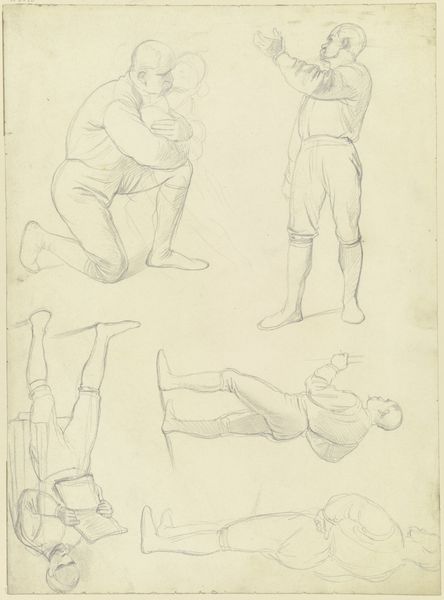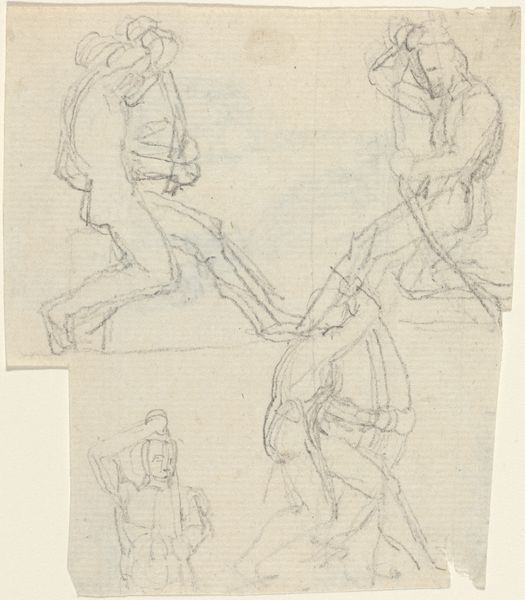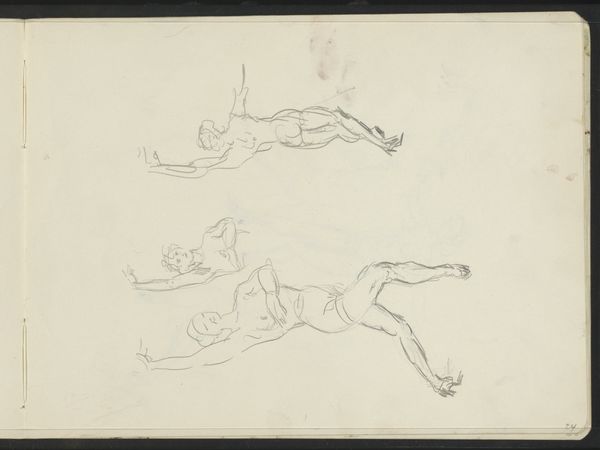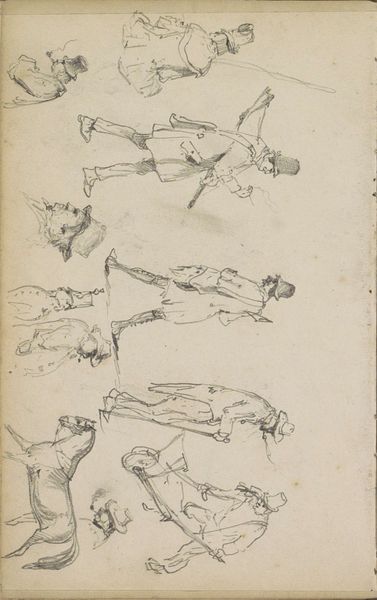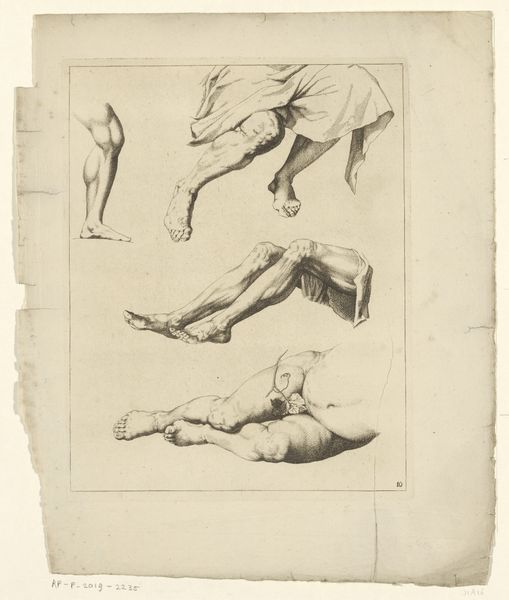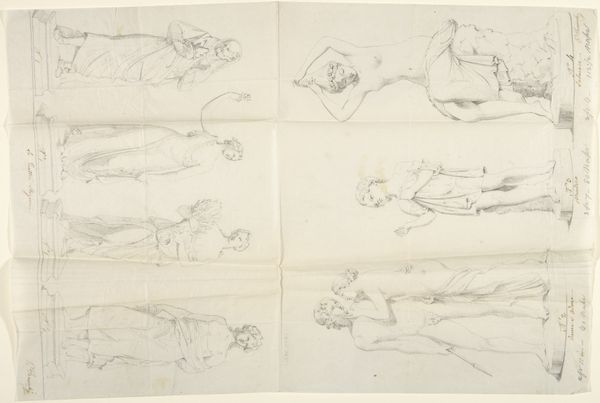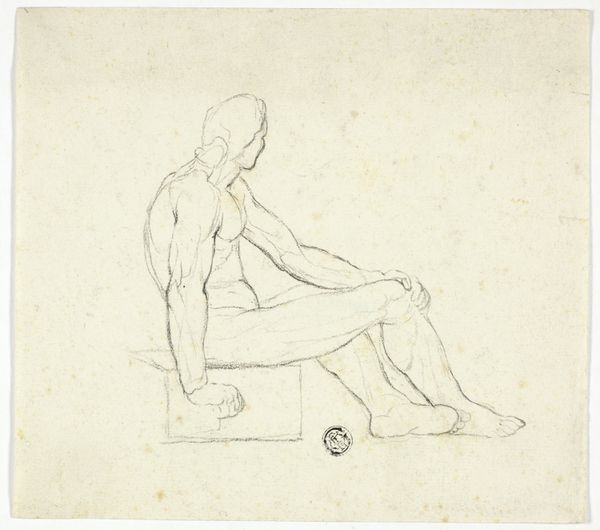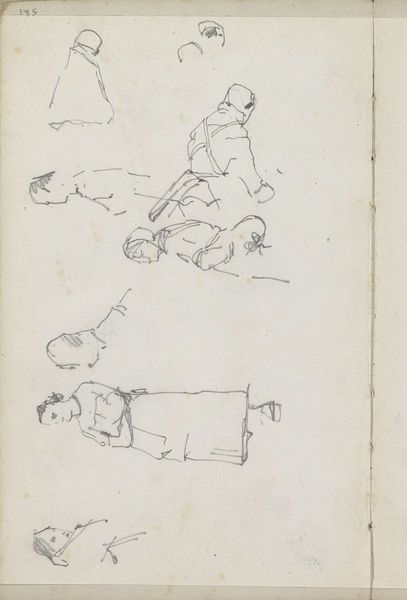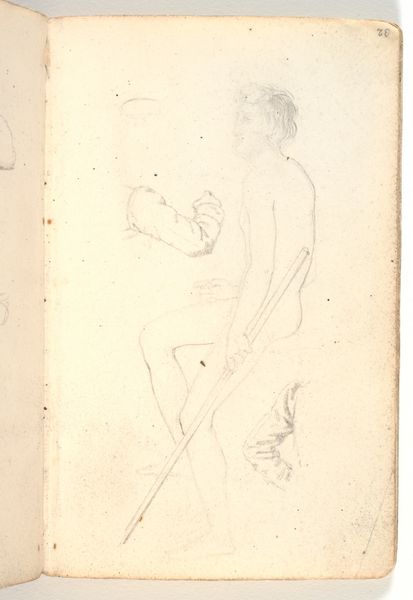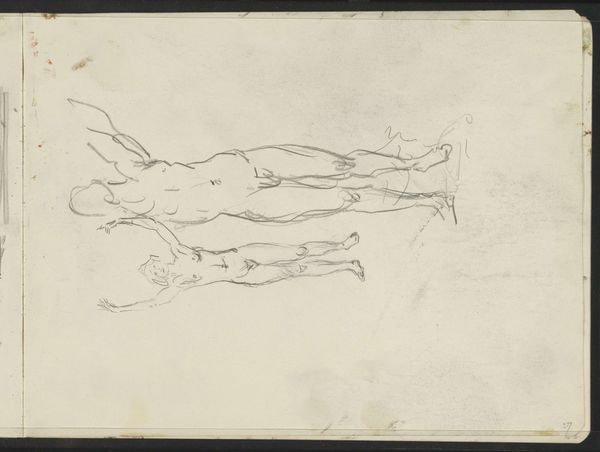
drawing, pencil
#
portrait
#
drawing
#
pencil
#
academic-art
Dimensions: 175 mm (height) x 140 mm (width) (bladmaal)
Curator: Here we have Christen Købke's "Fire modelstudier af drenge", created between 1810 and 1848. It’s currently held here at the SMK, drawn meticulously with pencil. What are your first impressions? Editor: A quiet vulnerability emanates from the sparse lines; these boys, captured in fleeting moments of repose, carry a weight that seems almost too mature. Their postures—contemplative, languid— hint at deeper psychological states. Curator: Absolutely, and note how the artist uses the academic drawing style to approach portraiture, capturing the youthful male form with precision. This pencil medium makes it such an approachable piece. You feel that you could pick up a pencil and attempt the same study. I see a work exploring idealized and pedagogical models that were circulated and taught. Editor: Beyond just studies of form, they seem to represent youth caught between innocence and experience. Look at the boy sitting atop the plinth—he embodies classical composure, yet his eyes betray a flicker of uncertainty. He's a symbol of the in-between. Curator: Exactly, the production of studies, as this shows, plays such an important role in the cultivation of the canon, literally, and perhaps less obviously in social ideals. Do you feel, by the title of this piece, the intention was to create a set or series? The presentation as “fire” I feel emphasizes the importance of number to his process. Editor: The assembly certainly enhances the sense of continuity and development of these figure images, creating, as you say, more symbolic importance. He has captured archetypal poses; the thinker, the dreamer, each resonates deeply, calling back similar classical ideals. I am struck how he subtly connects us to themes like memory and cultural identity. Curator: For me, looking again at the artist's labour and the choices in materiality—the humble pencil, the academic method—draws attention to its role as a didactic exercise in form. By examining these processes of reproduction, one really appreciates the construction of bodies in this historical context. Editor: I hadn’t thought so consciously about the construction before. Now, I too feel able to recontextualise the social dynamics inherent in that method, thinking about its power to communicate and shape perceptions across time. Curator: So there we have it; something made of graphite and paper invites conversations about social forces and enduring cultural motifs.
Comments
No comments
Be the first to comment and join the conversation on the ultimate creative platform.
